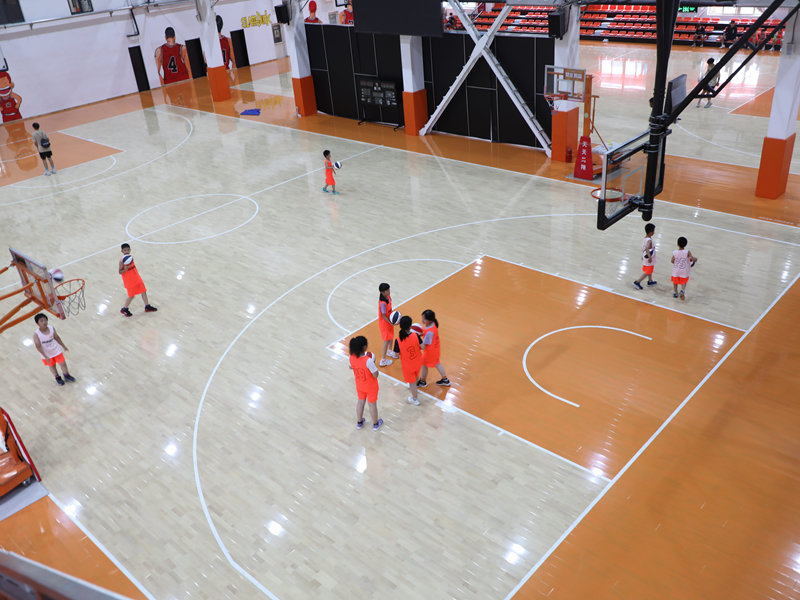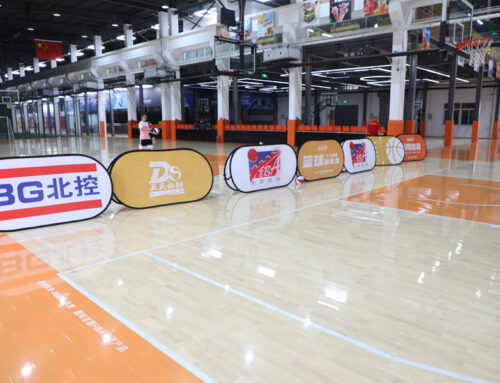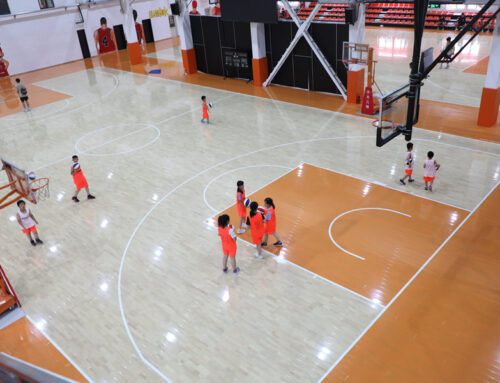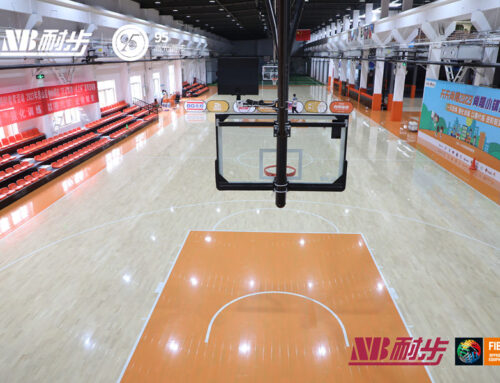Alright folks, let’s get into it. This cushioned court project started ’cause my buddy Mike twisted his ankle bad on that old concrete slab he calls a driveway court. Hurt like hell, took him out for weeks. Had to find something better, something safer.

Cheaper Stuff Was Trash
First instinct? Grab some of those premade rubber tiles everyone sells online. Looked cheap, felt promising. Laid out a test patch over concrete, barely used it for a month. What happened? Yeah… corners started peeling up like nobody’s business. Worse part? Felt weirdly sticky when it got hot, almost pulled your shoes off. Felt harder than I expected when jumping down too. Back to square one, wasted some cash.
Digging Deeper & Finding Hevea
Had to go back online, spent nights reading up. Kept seeing folks talk about “cushioning systems” and real wood surfaces, not just rubber slapped down. That’s where I stumbled on Hevea wood strips. The science bit? Hevea wood (rubberwood, basically) is naturally bouncy, like it has shock built-in. That’s the key for knees and ankles. Plus, they talk about how the pieces lock together super tight, no gaps. Less tripping, less injury risk.
Buying & Prepping the Foundation
Decided to pull the trigger, ordered enough Hevea interlocking strips plus this special foam pad they said goes underneath for extra cushion. Important part? That base HAS to be level. My concrete pad wasn’t terrible, but it sure wasn’t level. Borrowed Mike’s laser level, which was fun figuring out… then spent a full sweaty weekend grinding down high spots and filling low spots with concrete leveler. Total pain in the butt, but gotta do it right. No skipping this step, I mean it.
Laying the Foam & The Hevea Puzzle
First, rolled out that foam pad over the cleaned concrete. Felt like a giant yoga mat, honestly. Taped the seams good so nothing shifted. Then, started laying the Hevea strips. They click together like fancy flooring, tongue-and-groove style. You gotta really push down hard to get them tight together. Used a rubber mallet sometimes, gentle taps. Used to hate this stuff when I installed laminate flooring, but the Hevea felt sturdier, clicked together smoother. Was kinda satisfying hearing that “click-clack” as each row went down. Did have to trim the final row lengthwise – sharp handsaw worked fine.
First Test & The Results
Once the whole floor was clicked in place, no gaps visible, it was time. Jumped up and down, landed hard. Felt… different. Good different. You sink in just a tiny bit, then push back up. Dribbled a ball, the bounce felt true, consistent. Had Mike come over (ankle’s better!). He ran, jumped, stopped sharp. His face? Big relief. “My knees aren’t screaming,” he said. Exactly what I wanted.
Why It Holds Up & Prevents Pain
Been a few months now, heavy use, weather changes. Here’s the deal:
- Stays Put: The locking strips are rock solid, haven’t shifted or buckled once, even where we play hardest. No tripping edges.
- Bounce is Consistent: Doesn’t feel like one spot is softer than another. The foam pad + Hevea combo seems even everywhere.
- Impact Relief is Real: You notice it landing from a jump or stopping fast. Less jarring, way less ache later.
- Wood Handles Abuse: Scratches? Sure, but they seem superficial. Clean up easy, doesn’t stain like some cheaper materials.
- Rain Check: Drainage happens through the seams like they said. Water goes through, court doesn’t pool, drys surprisingly quick.
Cost more upfront than those rubber tiles? Yeah, for sure. But seeing Mike play without wincing, seeing the floor take constant pounding without falling apart? Worth every penny. Kids treat it like a trampoline sometimes… floor handles it fine, though maybe don’t tell ’em I said that!





